Abstract
The effects of consanguineous marriages on couples' fertility and sterility were explored through an interview survey of 20 626 women, chosen randomly from the rural and urban areas of the North Arcot District of Tamil Nadu State. Qualified women investigators obtained relevant information about reproductive performances of all married women resident in well defined rural and urban samples chosen randomly from North Arcot District. For each marriage, a family pedigree was drawn, extending upwards to two earlier generations on both sides of each spouse, in order to determine the existence and type of consanguinity involved. Of marriages in rural areas, 46·9% were consanguineous, and in urban areas, 29·1%. In more than 80% of the consanguineous marriages, the spouses were first cousins or more closely related. The extent of primary and secondary sterility and the level of fertility were examined in relation to each type of consanguineous marriage with the duration of the marriage and the age of the woman.
The frequency of primary sterility appeared to be lower in the consanguineous marriages compared to that in the non-consanguineous marriages. However, the differences were only marginal and only occasionally attained statistical significance. No trends were seen in the degree of consanguineous relationship, and there did not appear to be any association with the duration of marriage or the age of the woman.
The frequencies of secondary sterility did not differ significantly in consanguineous marriages in either the rural or the urban areas. No consistent associations were observed with degree of relationship. There were no specific associations in terms of the duration of marriage or the age of the woman observed in the frequencies of secondary sterility.
The mean levels of fertility were slightly raised among the consanguineous marriages and attained significance merely because of the large sample sizes involved.
These findings are discussed and compared with relevant published work. Comparisons are made difficult because of paucity of data based on community studies, and also because great differences exist in the methodology adopted by various investigators. The findings from the present study seem to show that long-term inbreeding results in only marginal or non-significant effects on fertility of inbred populations.
Full text
PDF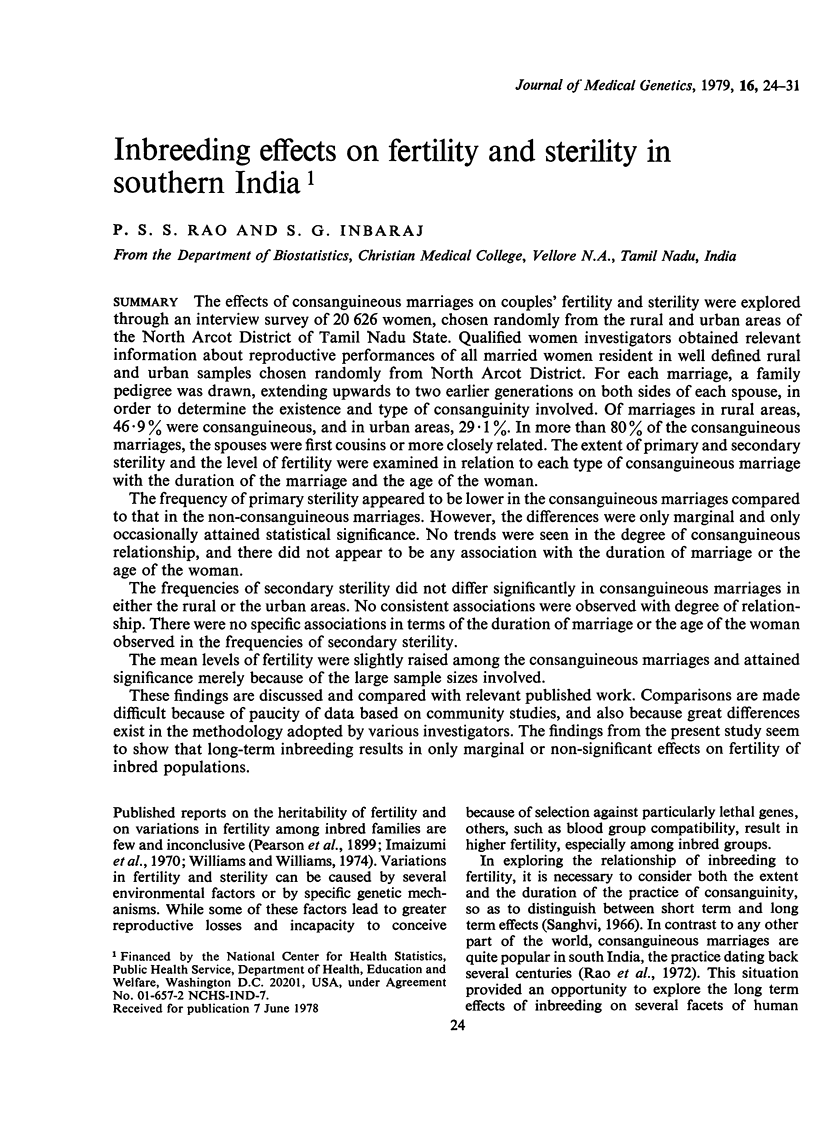
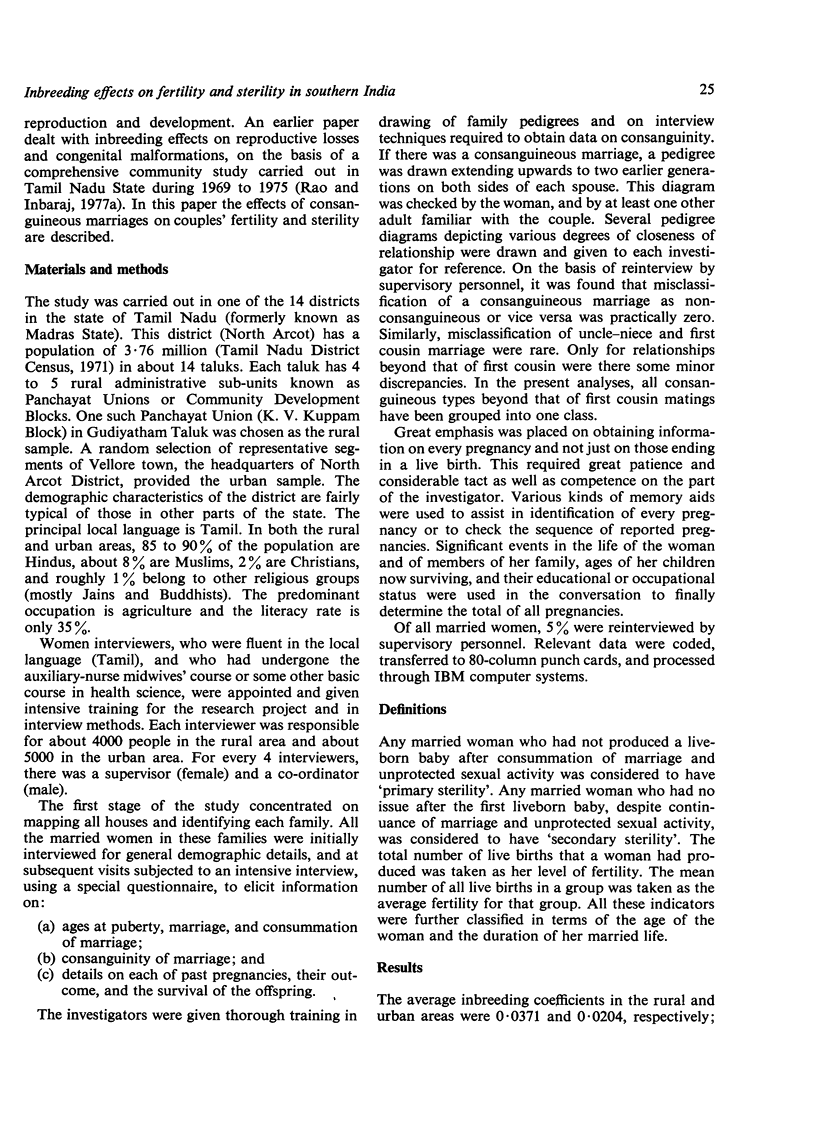
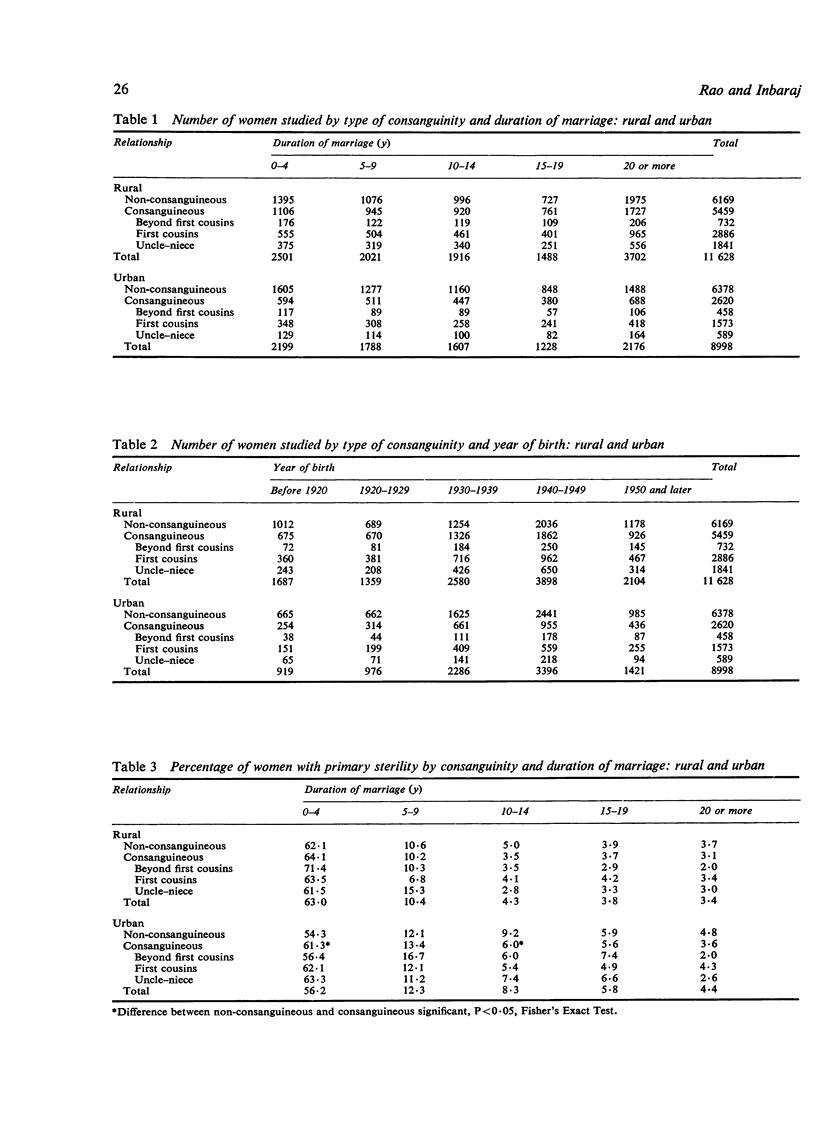
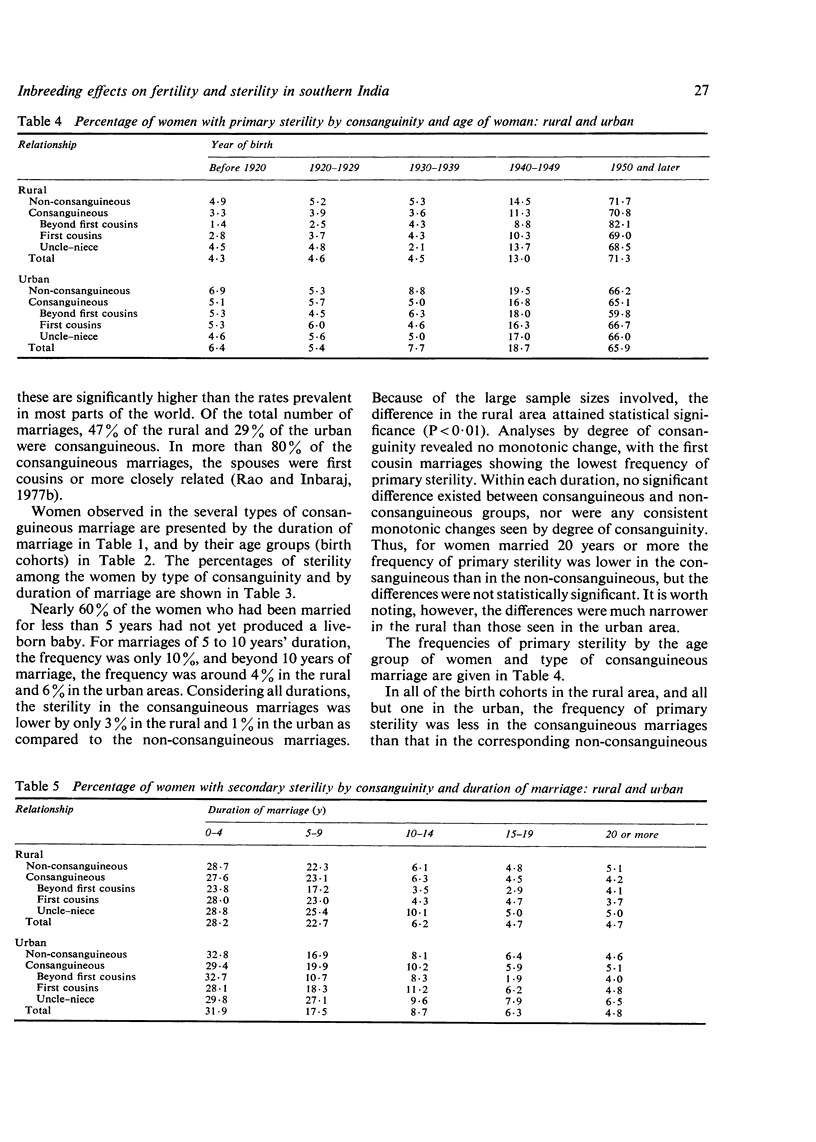
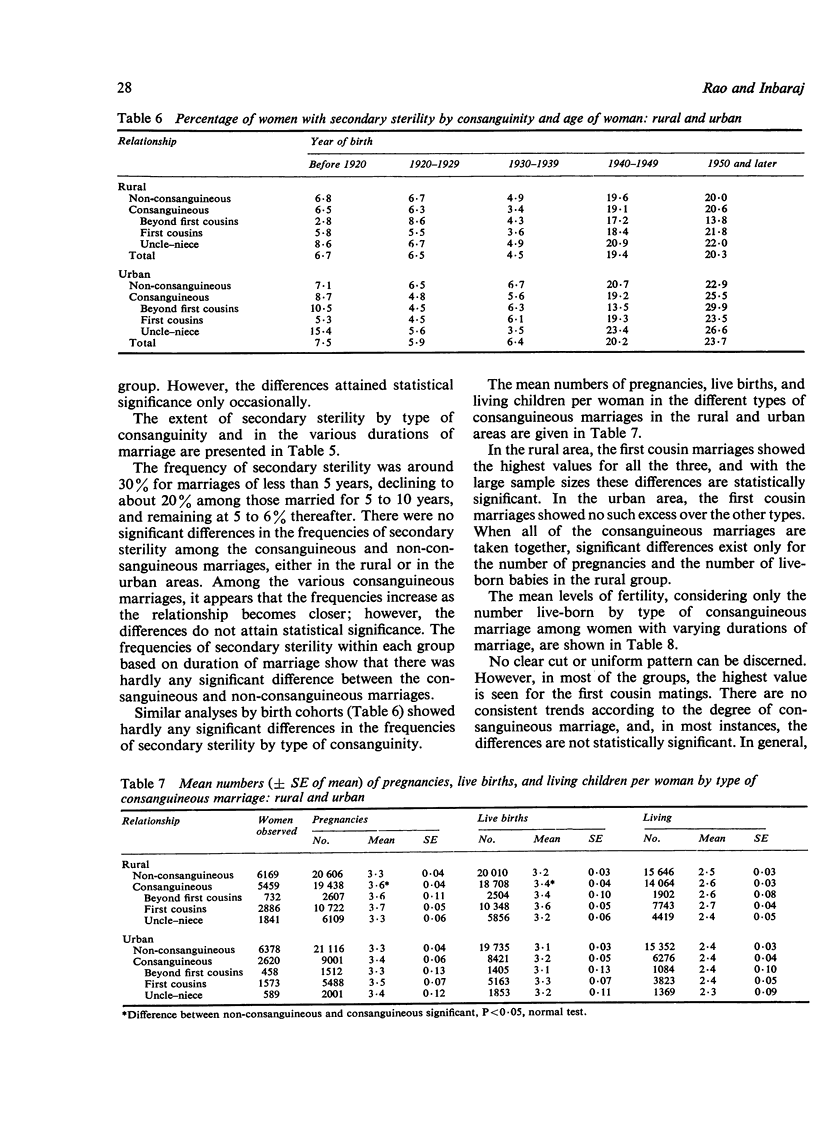
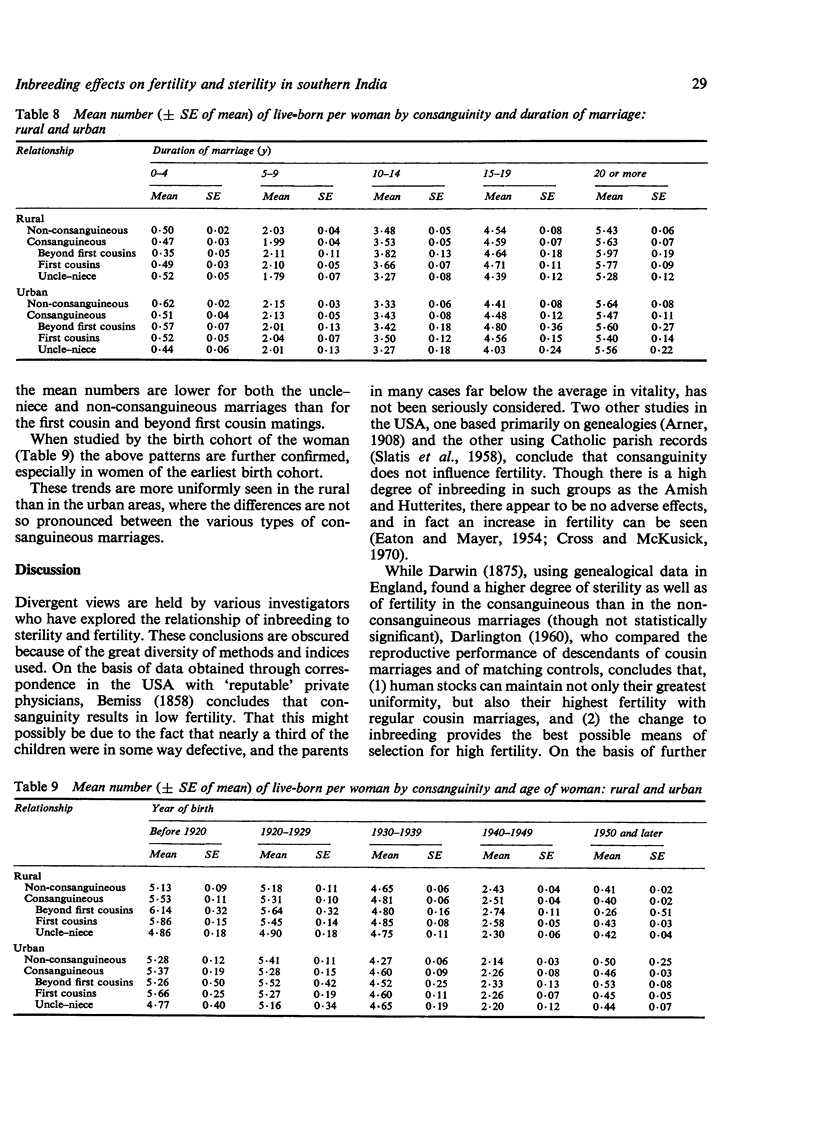
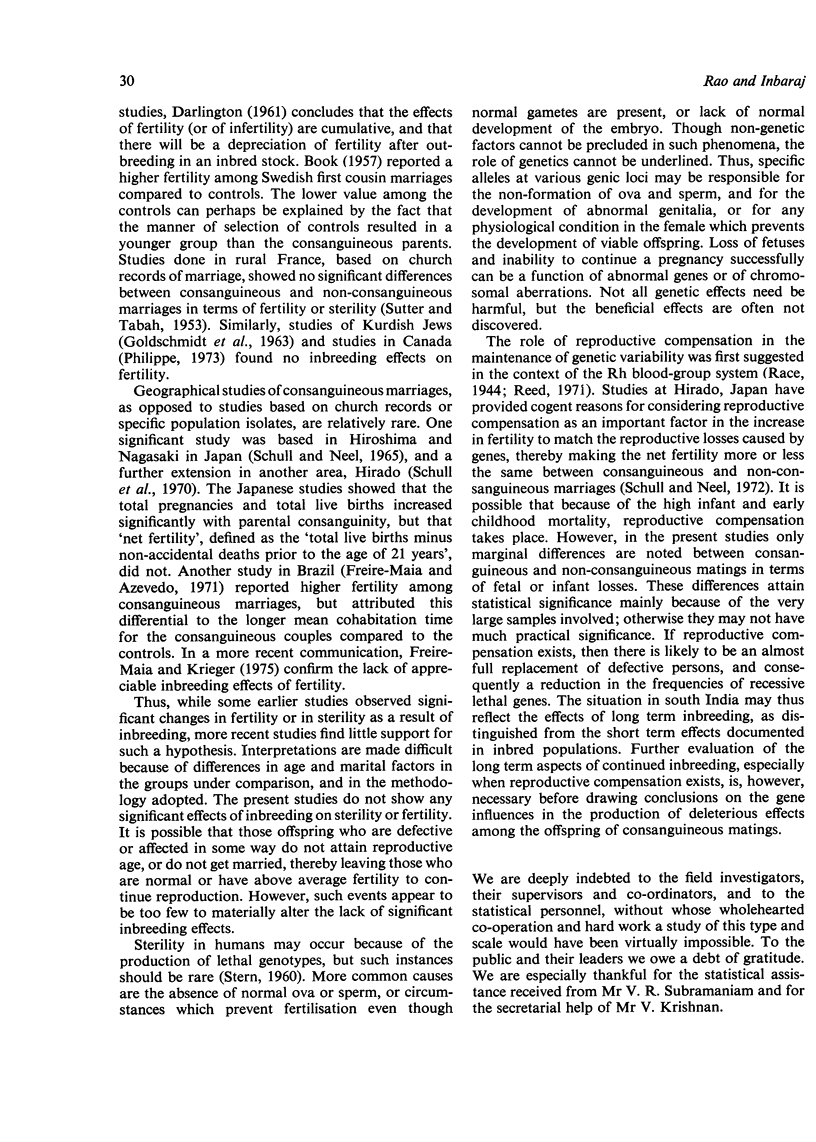
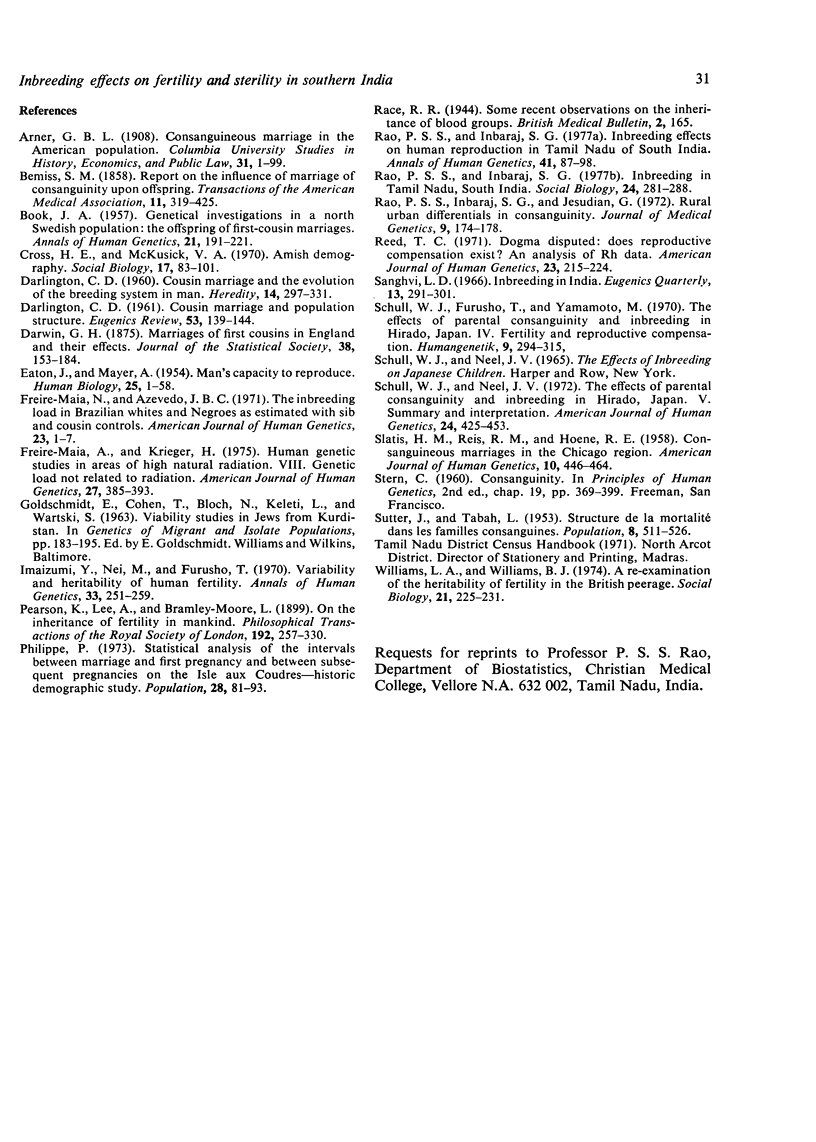
Selected References
These references are in PubMed. This may not be the complete list of references from this article.
- BOOK J. A. Genetical investigations in a North Swedish population; the offspring of first-cousin marriages. Ann Hum Genet. 1957 Mar;21(3):191–221. [PubMed] [Google Scholar]
- Cross H. E., McKusick V. A. Amish demography. Soc Biol. 1970 Jun;17(2):83–101. doi: 10.1080/19485565.1970.9987850. [DOI] [PubMed] [Google Scholar]
- Freire-Maia A., Krieger H. Human genetic studies in areas of high natural radiation. VIII. Genetic load not related to radiation. Am J Hum Genet. 1975 May;27(3):385–393. [PMC free article] [PubMed] [Google Scholar]
- Freire-Maia N., Azevedo J. B. The inbreeding load in Brazilian whites and negroes as estimated with sib and cousin controls. Am J Hum Genet. 1971 Jan;23(1):1–7. [PMC free article] [PubMed] [Google Scholar]
- Imaizumi Y., Nei M., Furusho T. Variability and heritability of human fertility. Ann Hum Genet. 1970 Jan;33(3):251–259. doi: 10.1111/j.1469-1809.1970.tb01650.x. [DOI] [PubMed] [Google Scholar]
- Rao P. S., Inbaraj S. G. Inbreeding effects on human reproduction in Tamil Nadu of South India. Ann Hum Genet. 1977 Jul;41(1):87–98. doi: 10.1111/j.1469-1809.1977.tb01964.x. [DOI] [PubMed] [Google Scholar]
- Rao P. S., Inbaraj S. G. Inbreeding in Tamil Nadu, South India. Soc Biol. 1977 Winter;24(4):281–288. doi: 10.1080/19485565.1977.9988298. [DOI] [PubMed] [Google Scholar]
- Rao P. S., Inbaraj S. G., Jesudian G. Rural-urban differentials in consanguinity. J Med Genet. 1972 Jun;9(2):174–178. doi: 10.1136/jmg.9.2.174. [DOI] [PMC free article] [PubMed] [Google Scholar]
- Reed T. E. Dogma disputed. Does reproductive compensation exist? An analysis of Rh data. Am J Hum Genet. 1971 Mar;23(2):215–224. [PMC free article] [PubMed] [Google Scholar]
- SLATIS H. M., REIS R. H., HOENE R. E. Consanguineous marriages in the Chicago region. Am J Hum Genet. 1958 Dec;10(4):446–464. [PMC free article] [PubMed] [Google Scholar]
- Sanghvi L. D. Inbreeding in India. Eugen Q. 1966 Dec;13(4):291–301. doi: 10.1080/19485565.1966.9987682. [DOI] [PubMed] [Google Scholar]
- Schull W. J., Furusho T., Yamamoto M., Nagano H., Komatsu I. The effect of parental consanguinity and inbreeding in Hirado, Japan. IV. Fertility and reproductive compensation. Humangenetik. 1970;9(4):294–315. doi: 10.1007/BF00286995. [DOI] [PubMed] [Google Scholar]
- Schull W. J., Neel J. V. The effects of parental consanguinity and inbreeding in Hirado, Japan. V. Summary and interpretation. Am J Hum Genet. 1972 Jul;24(4):425–453. [PMC free article] [PubMed] [Google Scholar]
- Williams L. A., Williams B. J. A re-examination of the heritability of fertility in the British peerage. Soc Biol. 1974 Fall;21(3):225–231. doi: 10.1080/19485565.1974.9988115. [DOI] [PubMed] [Google Scholar]


